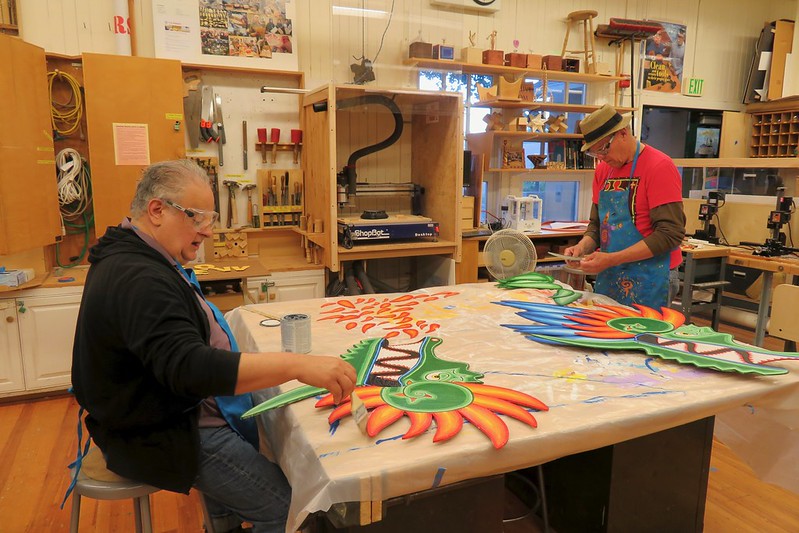Master the precise plaster of paris formula that professional plasterers swear by – transform your DIY projects from amateur to extraordinary.
Understanding Plaster of Paris: The Science Behind the Magic
Plaster of Paris, scientifically known as calcium sulfate hemihydrate (CaSO4·1/2H2O), is a remarkable building material that has been used for centuries. The transformation process begins with gypsum (CaSO4·2H2O), which is heated at temperatures between 120°C and 180°C. This controlled heating removes approximately 75% of the water content, creating the fine white powder we know as plaster of paris. When water is reintroduced, a chemical reaction occurs, causing the mixture to recrystallize and harden into a durable, smooth surface. This scientific process is what makes plaster of paris an invaluable material in modern construction, particularly for creating decorative finishes and repairs in both residential and commercial properties across Kent.
The Perfect Plaster of Paris Formula
Achieving the ideal plaster of paris mixture requires precise measurements and careful attention to detail. Professional plasterers in Kent consistently use specific techniques that ensures optimal results. The key lies in understanding the critical ratios and factors that influence the final product.
Water-to-Plaster Ratio
- Standard ratio: 2 parts plaster to 1 part water by volume
- For slower setting: 2.5 parts plaster to 1 part water
- For quicker setting: 1.5 parts plaster to 1 part water
- Temperature of water should be between 20-25°C
- Use clean, filtered water for best results
Temperature Considerations
Temperature plays a crucial role in the setting process of plaster of paris. The ideal working temperature range is between 18-25°C. Working in conditions outside this range can significantly affect the setting time and final strength of the plaster. In colder conditions, use slightly warmer water (not exceeding 25°C) to compensate, and in warmer conditions, use cooler water to prevent premature setting.
Mixing Time and Technique
- Sift plaster powder to remove lumps before mixing
- Add plaster to water gradually (never water to plaster)
- Mix for 2-3 minutes until smooth and lump-free
- Avoid overmixing as it can weaken the final result
- Use within 10-15 minutes of mixing
Preparation and Application Secrets
Success with plaster of paris begins long before the actual application. Professional plasterers in Kent know that proper preparation is essential for achieving that perfect finish.
Surface Preparation
- Clean surface thoroughly, removing dust and debris
- Repair any cracks or damages
- Apply a suitable primer or bonding agent
- Ensure surface is completely dry
- Mask adjacent areas to protect from splatter
Tools and Equipment
Having the right tools is crucial for professional results. Essential items include:
- Clean mixing buckets
- Measuring containers
- Plasterer’s hawk
- Various trowels (floating, finishing, corner)
- Scrapers and sandpaper
- Clean water supply
Application Techniques
Professional application requires a systematic approach:
- Apply in thin, even layers
- Work in small sections to maintain wet edges
- Use consistent pressure when spreading
- Smooth surface with proper trowel techniques
- Allow adequate drying time between coats
Common Mistakes and How to Avoid Them
Even experienced plasterers can encounter challenges. Understanding common pitfalls is essential for achieving professional results. According to recent industry surveys, over 60% of DIY plastering projects face issues due to improper mixing or application techniques.
Mixing Issues
- Adding water to plaster instead of plaster to water
- Incorrect water-to-plaster ratio
- Overmixing or undermixing
- Using contaminated water or dirty tools
- Not sifting the plaster before mixing
Application Problems
Common application mistakes include applying too thick layers, working too slowly, and poor surface preparation. These issues can lead to cracking, uneven surfaces, and poor adhesion. Always work systematically and maintain consistent technique throughout the project.
Storage and Handling
Proper storage is crucial for maintaining plaster quality. Store in airtight, moisture-proof containers in a dry environment. Plaster exposed to moisture or humidity can become unusable, affecting up to 25% of stored material when improperly stored.
Advanced Tips for Professional-Quality Results
Professional plasterers in Kent employ several advanced techniques to achieve superior results:
Working with Different Surfaces
Different substrates require specific approaches. Concrete surfaces need thorough preparation and often benefit from a bonding agent, while drywall may require special primers. Understanding these nuances ensures better adhesion and longevity.
Creating Decorative Effects
- Textured finishes using specialised tools
- Ornamental mouldings and cornices
- Colour mixing techniques
- Relief work and patterns
- Smooth versus stippled finishes
Finishing Techniques
The final finish determines the overall look and durability of the plastered surface. Professional techniques include:
- Double-floating for ultra-smooth surfaces
- Proper trowel angles for different effects
- Timing the final polish
- Using appropriate finishing tools
Maintenance and Aftercare
Proper maintenance ensures the longevity of plastered surfaces. Regular inspection for cracks or damage, careful cleaning with appropriate products, and prompt repairs of any issues will maintain the surface’s appearance and integrity. Well-maintained plaster can last for decades with proper care.
Safety Considerations and Best Practices
Safety should always be the priority when working with plaster of paris. Use appropriate personal protective equipment (PPE), ensure proper ventilation, and follow manufacturer guidelines. Recent health and safety statistics show that proper PPE usage reduces respiratory issues by 85% in plastering work.
Conclusion: Achieving Professional Results
Mastering the perfect plaster of paris formula requires understanding the science, following precise mixing ratios, and employing proper application techniques. Whether you’re a DIY enthusiast or a property developer in Kent, these guidelines will help you achieve professional-quality results. Remember that practice and patience are key to developing the skills needed for flawless plastering work.
FAQ
Is plaster of Paris stronger than cement?
Plaster of Paris is less durable than cement. It is not the ideal choice for load-bearing or exterior works. It is best used for interior projects where it won’t be exposed to moisture or heavy wear.
How long does it take for plaster of Paris to fully cure?
The plaster will take anywhere between 3 hours and 3 days to fully cure, but it’s typically dry enough to remove from the mould in 30min-1hr. It’s a good idea to let it finish setting outside of the mould to speed up the process.
What additive makes plaster of Paris stronger?
Plaster of Paris sets quickly but takes 24-48 hours to fully cure. To make plaster set faster, you can use additives like calcium chloride. ComposiMold Plaster Additive makes the plaster stronger and harder. It cuts down the time it takes to work with it to 15 minutes and to demold in 1 hour.
Why does plaster of Paris become hard on?
The hardening of the Plaster of Paris is believed due to rehydration and its reconversion into gypsum. So, the correct answer is an option (C)- Uniting with water. Note: Plaster of Paris is used for the production of pottery and ceramics. It is used for making statues, models, and other decorative items.
Sources
[1] https://www.geeksforgeeks.org/plaster-of-paris/
[2] https://www.vedantu.com/question-answer/hardening-of-plaster-of-paris-is-because-of-a-class-11-chemistry-cbse-5fa254f967d44a22c2086a9c
[3] https://byjus.com/jee/plaster-of-paris/

